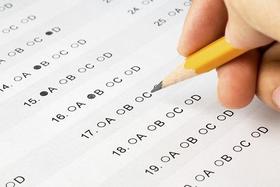Serving 168 students in grades 6-8, Wood Memorial Middle School ranks in the bottom 50% of all schools in Indiana for overall test scores (math proficiency is bottom 50%, and reading proficiency is bottom 50%).
The percentage of students achieving proficiency in math is 25-29% (which is lower than the Indiana state average of 38%). The percentage of students achieving proficiency in reading/language arts is 40-44% (which is approximately equal to the Indiana state average of 41%).
The student:teacher ratio of 13:1 is lower than the Indiana state level of 15:1.
Minority enrollment is 5% of the student body (majority Hispanic), which is lower than the Indiana state average of 37% (majority Hispanic).
Quick Stats (2025)
- Grades: 6-8
- Enrollment: 168 students
- Student:Teacher Ratio: 13:1
- Minority Enrollment: 5%
- Overall Testing Rank: Bottom 50% in IN
- Math Proficiency: 25-29% (Btm 50%)
- Reading Proficiency: 40-44% (Top 50%)
- Source: National Center for Education Statistics (NCES), IN Dept. of Education
Top Rankings
Wood Memorial Middle School ranks among the top 20% of public schools in Indiana for:
Category
Attribute
Most improved public schools
Community Size
Student Attention
School Overview
Wood Memorial Middle School's student population of 168 students has grown by 23% over five school years.
The teacher population of 13 teachers has declined by 23% over five school years.
Grades Offered
Grades 6-8
Total Students
168 students

Gender %

Total Classroom Teachers
13 teachers

Students by Grade

School Rankings
Wood Memorial Middle School ranks within the bottom 50% of all 1,763 schools in Indiana (based off of combined math and reading proficiency testing data).
The diversity score of Wood Memorial Middle School is 0.10, which is less than the diversity score at state average of 0.56. The school's diversity has stayed relatively flat over five school years.
Overall Testing Rank
#1008 out of 1763 schools
(Bottom 50%)
(Bottom 50%)

Math Test Scores (% Proficient)
25-29%
38%

Reading/Language Arts Test Scores (% Proficient)
40-44%
41%

Student : Teacher Ratio
13:1
15:1

American Indian
n/a
n/a
Asian
n/a
3%

Hispanic
1%
15%

Black
n/a
13%

White
95%
63%

Hawaiian
n/a
n/a
Two or more races
4%
6%

All Ethnic Groups



Participates in the National School Lunch Program (NSLP)
Yes
Eligible for Free Lunch
55%
43%

Eligible for Reduced Lunch
8%
6%

School Statewide Testing
School District Name
Source: National Center for Education Statistics (NCES), IN Dept. of Education
Frequently Asked Questions
What is Wood Memorial Middle School's ranking?
Wood Memorial Middle School is ranked #1008 out of 1,763 schools, which ranks it among the bottom 50% of public schools in Indiana.
What percent of students have achieved state testing proficiency in math and reading?
25-29% of students have achieved math proficiency (compared to the 38% IN state average), while 40-44% of students have achieved reading proficiency (compared to the 41% IN state average).
How many students attend Wood Memorial Middle School?
168 students attend Wood Memorial Middle School.
What is the racial composition of the student body?
95% of Wood Memorial Middle School students are White, 4% of students are Two or more races, and 1% of students are Hispanic.
What is the student:teacher ratio of Wood Memorial Middle School?
Wood Memorial Middle School has a student ration of 13:1, which is lower than the Indiana state average of 15:1.
What grades does Wood Memorial Middle School offer ?
Wood Memorial Middle School offers enrollment in grades 6-8
What school district is Wood Memorial Middle School part of?
Wood Memorial Middle School is part of East Gibson School Corporation School District.
School Reviews
Review Wood Memorial Middle School. Reviews should be a few sentences in length. Please include any comments on:
- Quality of academic programs, teachers, and facilities
- Availability of music, art, sports and other extracurricular activities
Recent Articles

Teaching: Using Virtual Reality
Virtual Reality can enhance your lessons safely and efficiently. Virtual reality allows your students to explore worlds they might not otherwise see. We offer some suggestions on how to use VR in your classroom.

Navigating Special Needs Education: A Comprehensive Guide for Parents and Educators
We explore special needs in children, including learning disabilities, autism, and ADHD. We suggest some insights on diagnosis, support strategies, and educational approaches, empowering parents and educators to provide effective assistance to children with special needs.

Personalized Learning: Revolutionizing Education for the 21st Century
Explore the revolutionary approach of Personalized Learning in K-12 education. This article discusses the benefits, challenges, and potential of tailoring education to individual student needs, incorporating technology and adaptive learning methods to prepare students for the 21st century.





